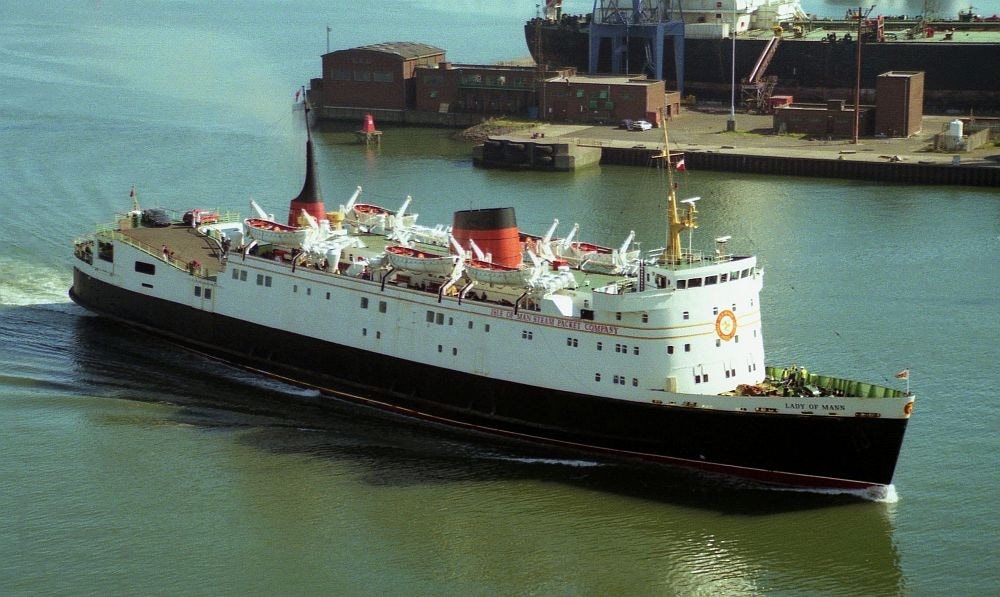The following images are sorted by their normal operator, however on occasion the Seacat craft would operate across operators due to the common ownership of both companies by Sea Containers during from 1996 until the Steam Packet was sold in 2003.
—
Former ferries of NI Part 1: From Sealink to Stena Line
—
Former ferries of NI Pt.2: From Atlantic Steam Navigation to P&O
—
Former ferries of NI Pt.3: Seatruck, Merchant Ferries, Norse Irish, DFDS, and other NI to England operators
Please click on the thumbnail to view the full image along with caption and copyright information.
This page is best viewed on a computer or tablet.


The Isle of Man Steam Packet claims to be the oldest continuously operating ferry service in the world. They offer routes linking the Isle of Man with Liverpool, Heysham, Belfast, and Dublin.
The forerunner of the ‘Steam Packet’ was had its first sailing on 30th June 1830, between Douglas and Liverpool, and traded as ‘Mona’s Isle Company’ with the passenger ferry MONA’S ISLE (i). In 1832 the company adopted its present name. The first RoRo car ferry MANX MAID (ii) came in 1962 and was a side loading affair built by Cammel-Laird at Birkenhead. Three near-sisters would follow before the first stern loading car ferry MONA’S ISLE (vi) (the former FREE ENTERPRISE III) arrived in 1984.
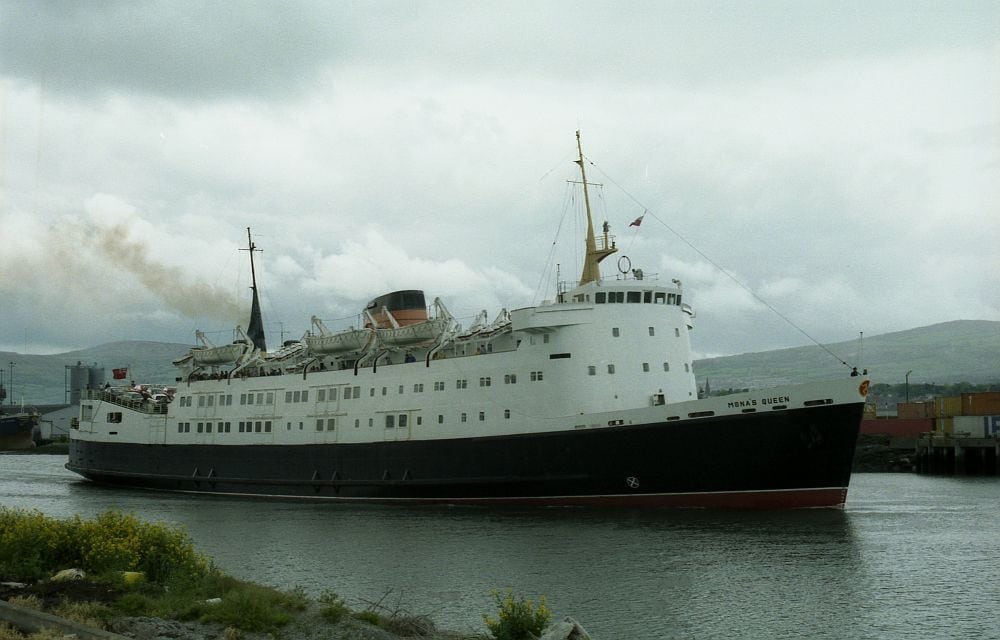
In 1985 following tough competition from new company ‘Manx Line’ since 1978, the company merged with its competitor which was by now owned by Sealink, itself now owned by Sea Containers. Also in 1985 the company introduced TYNWALD (vi), the former Larne – Stranraer ferry ANTRIM PRINCESS and the first Sealink drive-through ferry, as a replacement for MONA’S ISLE (vi) which had proven unsuited for the route.
TYNWALD (vi) was replaced in 1990 by another Sealink ferry, the former SAINT ELOI which by now had become CHANNEL ENTENTE. Initially she retained her name, even after her purchase by the Steam Packet, but was taken out of service in late September to go to Wright & Beyer for a rebuild. She returned to service in December renamed KING ORRY (vi). 1990/91 saw the hostile takeover of Sealink from Sea Containers by Sweden’s Stena Line, however the Steam Packet remained largely unaffected as Sea Containers did not own the whole company.
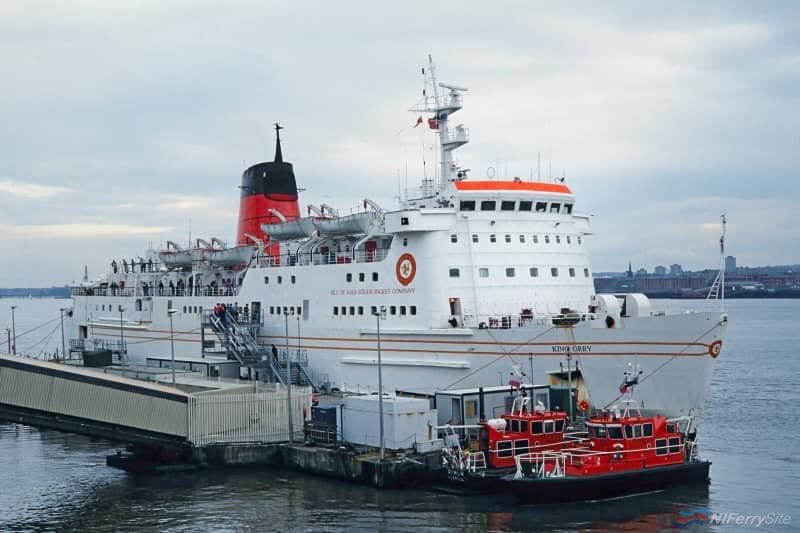
In 1996, Sea Containers took full control of the Isle of Man Steam Packet. The Steam Packet had by now already introduced its first Seacat catamaran SEACAT ISLE OF MAN on charter from Sea Containers subsidiary Hoverspeed in 1994, operating at up to twice the speed of the companies other vessels but being unable to carry any freight. A succession of other Seacat’s followed from 1996 onwards (when SEACAT ISLE OF MAN was returned to Hoverspeed), with the company developing a new strategy of carrying tourist traffic on the fast catamarans and freight on conventional ferries such as the freighter PEVERIL(ex PENDA) which had been with the company since 1982. This led to the order of the BEN-MY-CHREE (vi), a modern RoPax with more limited passenger facilities than previous Steam Packet conventional ferries. She was ordered from Dutch shipyard Van der Giessen de Noord in 1997 and delivered following year. Following widespread criticism of this new vessel which was the largest Steam Packet vessel ever, she received tweaks to her accommodation as early as her first winter refit, and an additional accommodation module in 2004.
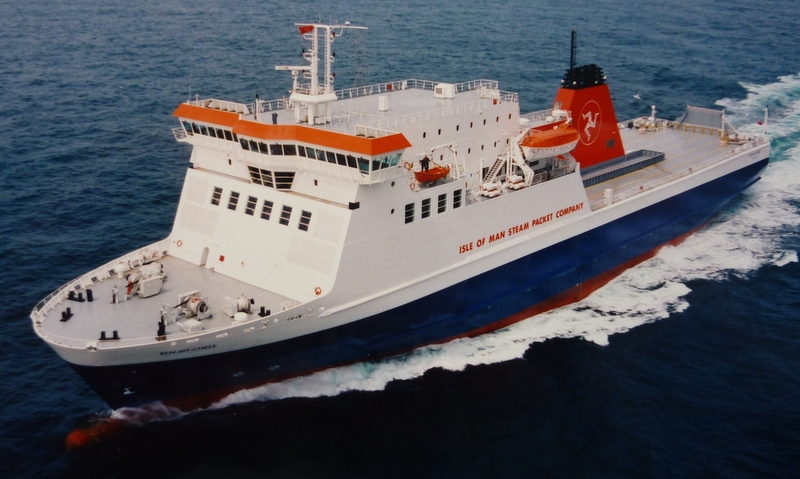
Sea Containers sold the ‘Steam Packet’ in 2003 following financial difficulties at the parent. Following this the company has passed between private equity firms and banks. Ultimately Hoverspeed would survive only until early 2005 until it was shut down entirely due to losses (see below). In 2005 the last of the 4 original RoRo car ferries, LADY OF MAN (ii), was sold after 29 years of service for the company following the introduction of the monohull fast-craft SUPERSEACAT TWO by the new owners shortly after they took over the company in 2003.
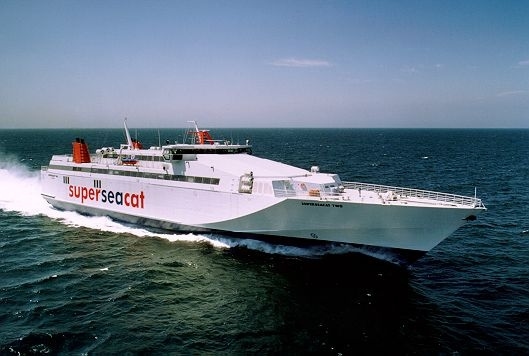
In 2008 a new catamaran arrived which would ultimately replace SUPERSEACAT TWO which had been renamed VIKING. Named MANANNAN, the new catamaran had been on charter to the US Military and so needed a comprehensive refit to make her suitable for Steam Packet service. At present the Steam Packet fleet comprises only of BEN-MY-CHREE (vi) and MANANNAN, with the RoRo freighter ARROW chartered from Seatruck to provide additiona freight capacity when required. It was announced earlier this year that the Isle of Man government is to take over the Isle of Man Steam Packet themselves.
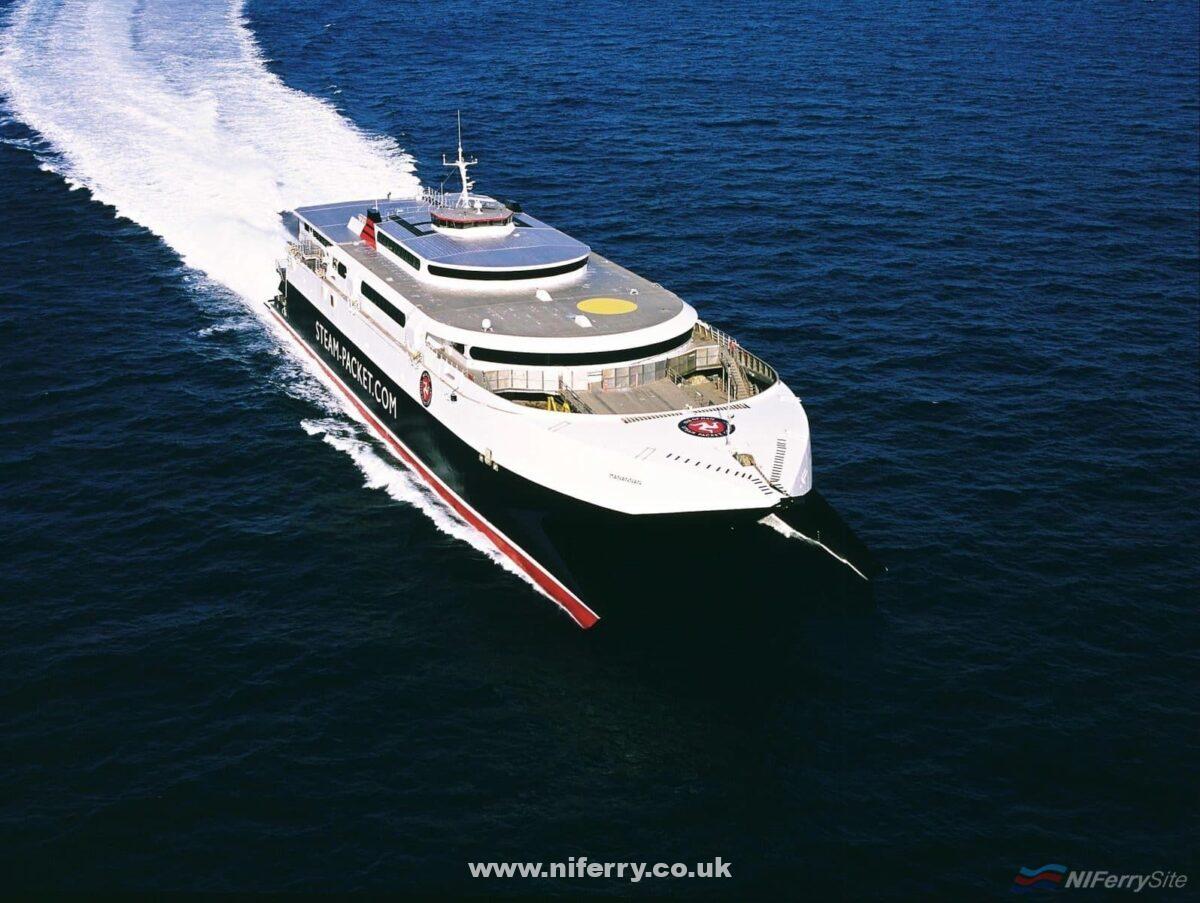
[foogallery id=”8947″]


Sea Containers’ Seacat service exploded onto the Northern Irish ferry scene in 1992 as the first “fast ferry” service operating from the province. Operating in direct competition to the conventional ferry services from Larne to Stranraer and Cairnryan, Seacat initially offered a crossing time of just 90 minutes between Belfast and Stranraer using the brand new InCat 74m catamaran SEACAT SCOTLAND. Dumfries and Galloway Council funded a new purpose built terminal facility in Stranraer (though the buildings were of temporary construction), while in Belfast the former Liverpool ferry terminal at Albert Quay was made available having been vacant since the Belfast Car Ferries service ended in October 1990 (though the linkspan had been used by a replacement freight only service operated by P&O in 1991). Securing the SeaCat service was something of a coup for Belfast as Sea Containers had originally intended to operate from Larne, however Larne was unable to offer dedicated facilities within walking distance of a City Centre like Belfast could.
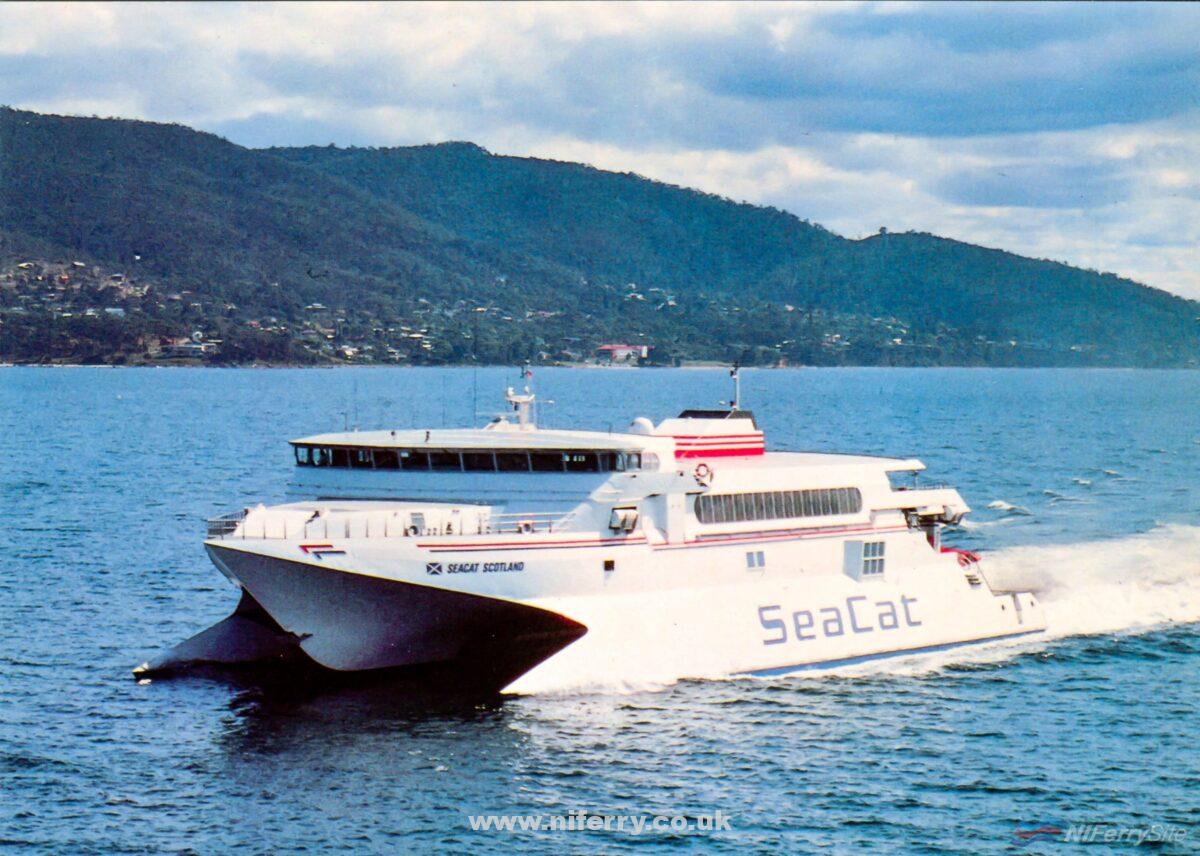
From 1996 a seasonal crossing taking around 4 hours was offered from Belfast to Heysham in partnership with fellow Sea Containers subsidiary Isle of Man Steam Packet, replacing the Sealink passenger and vehicle service which had closed a quarter of a century earlier. The Heysham link would ultimately only last until 21st August 2002 though, having been operated by SEACAT DANMARK, SUPERSEACAT TWO, HOVERSPEED GREAT BRITAIN, and SEACAT RAPIDE in different seasons.
The SeaCat service to Scotland captured the imagination of the travelling public, but it wasn’t long before the established Larne based operators started to offer their own fast ferry option. Perhaps most significantly Sealink Stena/Stena Sealink rebranded as Stena Line and moved from Larne to Belfast for the 1996 season onwards, introducing the worlds largest car carrying catamaran HSS STENA VOYAGER with a similar crossing time to the SeaCat in addition to their conventional ferries on their own Belfast to Stranraer service. Also in 1996, P&O introduced their own fast ferry service from Larne with a crossing time of just 60 minutes. In order to gain a competitive advantage SeaCat started offering an alternative route from Belfast to Troon from 1999. However, this did not go down well with Dumfries and Galloway council who demanded SeaCat operate 3 crossings a day to Stranraer and commit to constructing a permanent terminal building or vacate the Stranraer terminal.
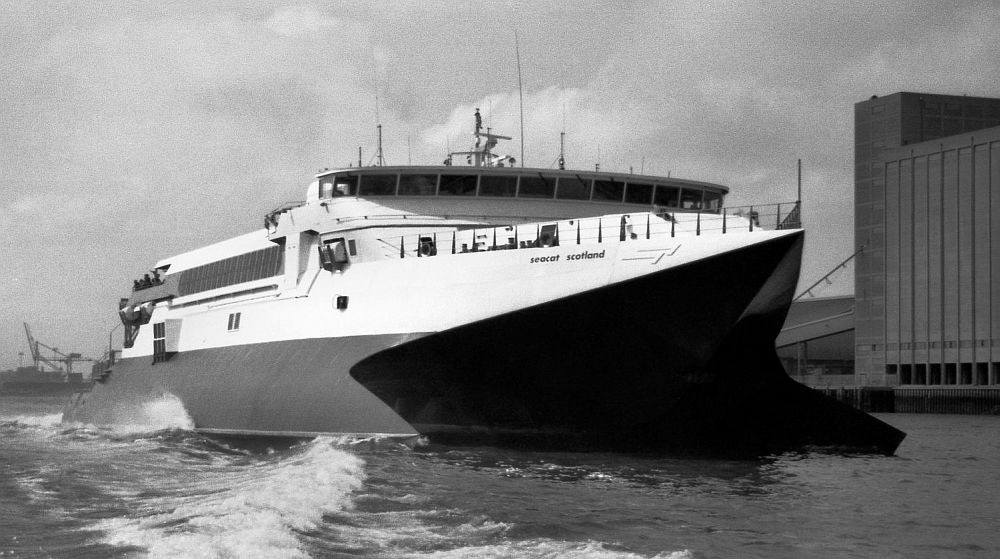
On 13th March 2000 SeaCat operated their last sailing from Stranraer. In 2003 P&O began a seasonal service from Larne to Troon in direct competition with SeaCat. SeaCat introduced the larger SEACAT RAPIDE previously used on the Heysham service in place of SEACAT SCOTLAND the same year, but the following year the SeaCat service itself became seasonal. However, by this stage parent company Sea Containers was feeling the strain from operating its loss making SeaCat ferry services on the English Channel and to Scotland, and 2004 would be the last year SeaCat would operate. The last SeaCat sailing was on Monday 1st November 2004, with the company announcing on 7th February 2005 that it was closing down less than 13 years since it started operations. Later that same year Hoverspeed ceased all operations.
[foogallery id=”8948″]
The above article is Copyright © Steven Tarbox, all rights reserved. Unauthorised reproduction or distribution is strictly prohibited.
With thanks to the all of the contributors for the use of their images.
Original articles published: June 2015
Rebuilt, articles merged, updated, and moved to new location: 12 October 2017 – June 2018
last updated: 30/08/18
